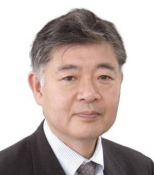Speaker: Prof. Motoyuki Sato(IEEE Fellow)
Affiliation: Tohoku University
Report Title: Understanding Ground Penetrating Radar (GPR) profiles based on Electromagnetics
Abstract:
Ground Penetrating Radar (GPR) is a useful technique for shallow geophysical exploration. GPR is currently widely used for detection of buried objects such as pipe and cables, inspection of pavement and other applications. GPR equipment is easy to operate, and GPR images can be displayed immediately after data is acquired. However, understanding the physical meanings of GPR profiles is not straightforward. GPR profiles are influenced by reflection and diffraction of electromagnetic waves from buried objects, and also by propagation in inhomogeneous soil and rock, and surrounding objects such as metal wires. Therefore, very careful interpretation is required, and the knowledge of mechanisms of electromagnetic wave behavior can be used for better signal processing for image reconstruction, i.e., Synthetic Aperture Radar processing or migration.
In this tutorial, I will explain the electromagnetic wave radiation from an antenna, which determines the waveform of GPR signal. It is also related to optimization of antenna design for GPR system. Then I will discuss on the antenna coupling to the soil and material, which is related to the optimum distance of GPR antenna on the ground surface. Then we will discuss the influence of metal objects, which are closely laid near the GPR system.
I will describe methods to determine the electric properties of material, by using GPR and other methods, which are important for image reconstruction. This technique can be used for in-situ determination of the electric constant of material.
Biography:
 Motoyuki Sato received the B.E., M.E degrees, and Dr. Eng. degree in information engineering from Tohoku University, Sendai, Japan, in 1980, 1982 and 1985, respectively. Since 1997 he has been a professor at Tohoku University until his retirement in 2023, and currently he is Professor Emeritus of Tohoku University and Guest professor at Higashi Nippon International University. He is CEO of ALISys Co., Ltd, which he established in 2019
Motoyuki Sato received the B.E., M.E degrees, and Dr. Eng. degree in information engineering from Tohoku University, Sendai, Japan, in 1980, 1982 and 1985, respectively. Since 1997 he has been a professor at Tohoku University until his retirement in 2023, and currently he is Professor Emeritus of Tohoku University and Guest professor at Higashi Nippon International University. He is CEO of ALISys Co., Ltd, which he established in 2019
His current interests include transient electromagnetics and antennas, radar polarimetry, ground penetrating radar (GPR), borehole radar, electromagnetic induction sensing, GB-SAR and MIMO radar systems. He developed GPR sensors for humanitarian demining, and they are used in mine affected countries including Cambodia and Ukraine.
He served the technical chair of GPR1996 in Sendai and the general chair of IGARSS2011 Sendai-Vancouver. He is a life fellow of IEEE and a fellow of IEICE.